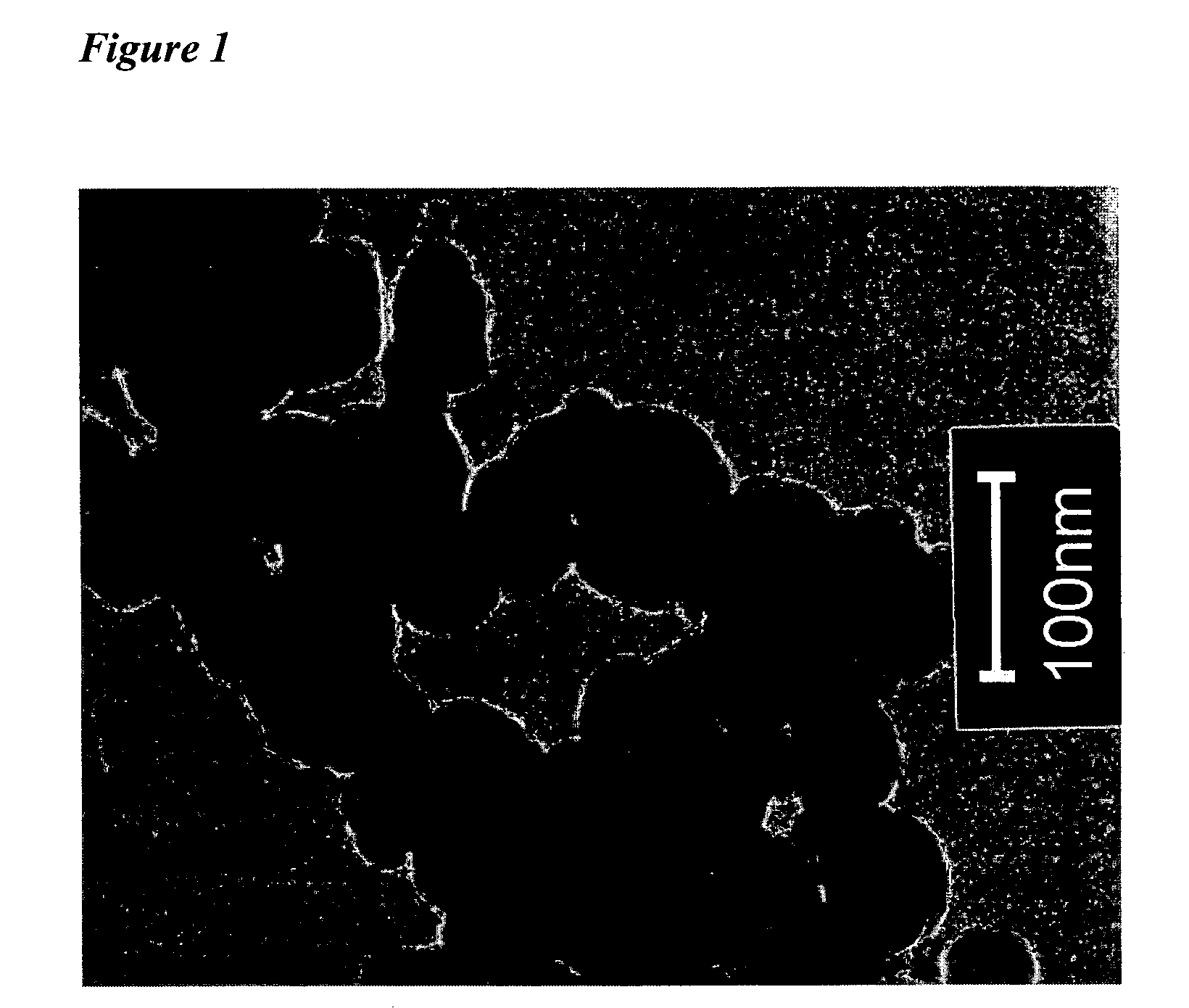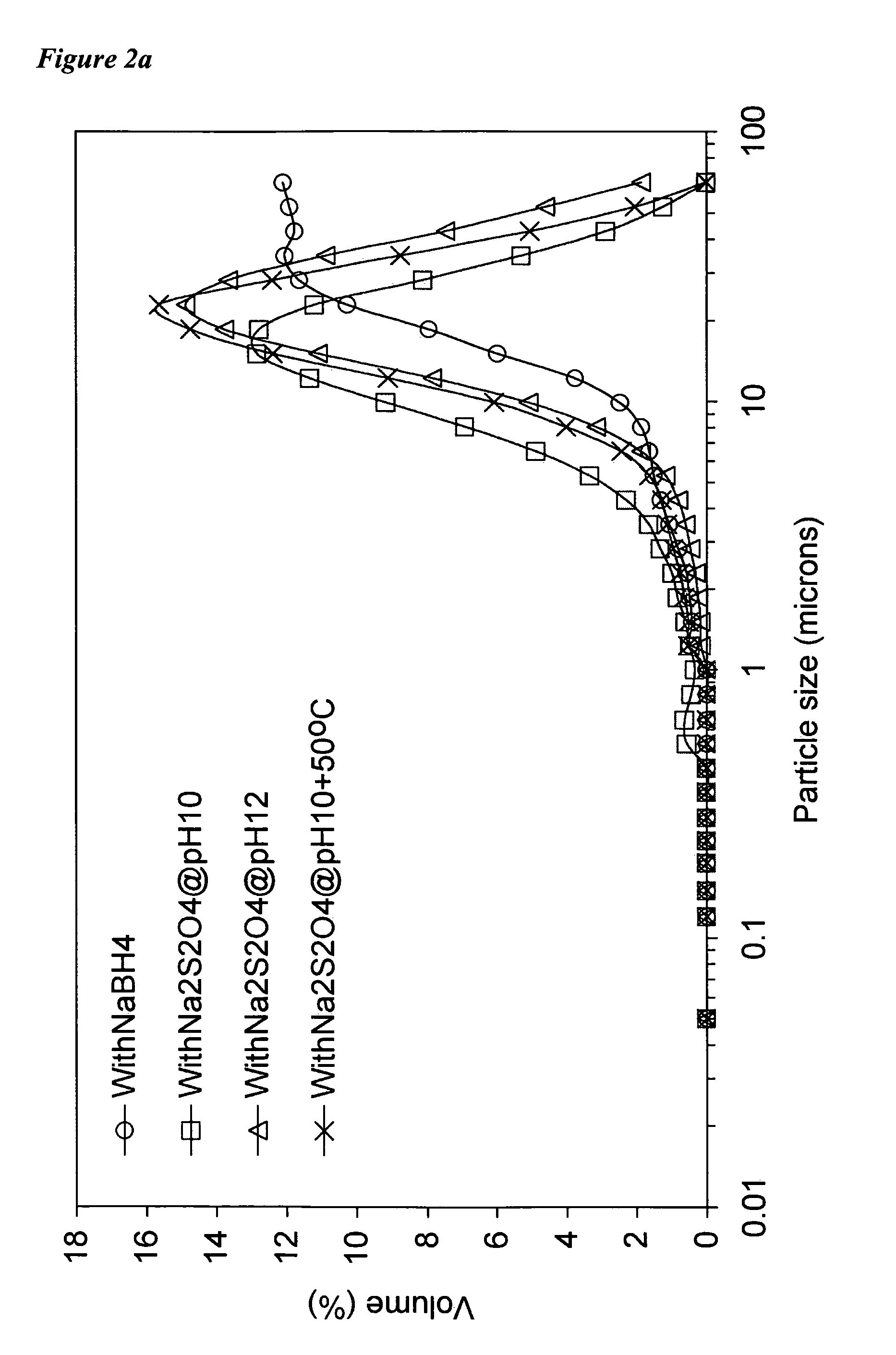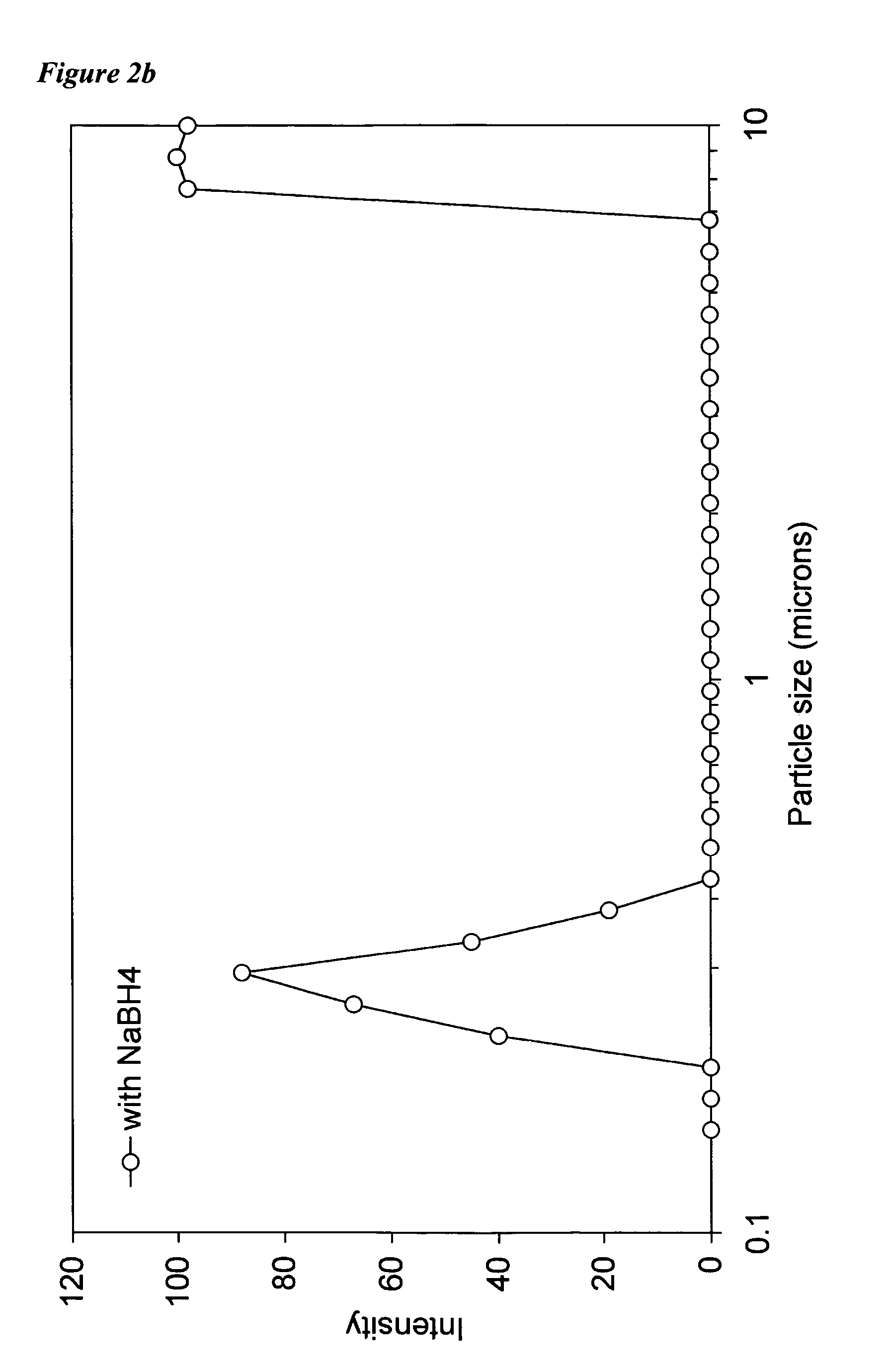Process for producing a nanoscale zero-valent metal
a zero-valent metal and nano-scale technology, applied in the field of nano-scale zero-valent metal preparation, can solve the problems of significant surface oxidation and change of fe particles, and achieve the effect of reducing the potential for water
- Summary
- Abstract
- Description
- Claims
- Application Information
AI Technical Summary
Benefits of technology
Problems solved by technology
Method used
Image
Examples
example 1
Method for ZVI Synthesis Using Sodium Dithionite and Ferrous Chloride
[0077]Nanoscale ZVI particles are produced by adding 40 mL of 0.1 M FeCl2 (FeCl2.4H2O, 99%, Sigma) aqueous solution dropwise to a 50 mL of 0.2 M Na2S2O4 (85% purity, Sigma) aqueous solution at ambient temperature with magnetic stirring. NaOH is added to keep pH at or above 10. Fe2+ is reduced and Fe0 is precipitated according to the following reaction:
[0078]
ReactionEHS2O42− + 4OH− → 2SO32− + 2H2O + 2e−+1.12Fe2+ + 2e− → Fe(s)−0.44S2O42− + Fe2+ + 4OH− → Fe(s) + 2SO32− + 2H2O+0.68
[0079]The first 5 minutes of the reaction was carried out under nitrogen gas and then the container was sealed for the rest of the reaction (4 h). The black nanoparticles are clearly visible and primarily produced within this first 5 minutes period. Dry metal particles are obtained by washing the wet precipitates with 10−4 M HCl solution and Milli-Q water (or with Milli-Q only) and drying using a vacuum drier for 2 days. Dry particles need to...
example 2
pH, Atmosphere and Reductant Dependence of the Process of the Invention
[0086]Using solutions of metal cation and reductant salt prepared as described above, the following combinations, along with variations in atmosphere (“air” thus including atmospheric O2 and CO2, and “N2” representing a substantially inert nitrogen atmosphere) and pH were tried under laboratory conditions. The column “ZVI” indicates whether ZVI was formed.
PUM
| Property | Measurement | Unit |
|---|---|---|
| pH | aaaaa | aaaaa |
| pH | aaaaa | aaaaa |
| pH | aaaaa | aaaaa |
Abstract
Description
Claims
Application Information
 Login to View More
Login to View More - R&D
- Intellectual Property
- Life Sciences
- Materials
- Tech Scout
- Unparalleled Data Quality
- Higher Quality Content
- 60% Fewer Hallucinations
Browse by: Latest US Patents, China's latest patents, Technical Efficacy Thesaurus, Application Domain, Technology Topic, Popular Technical Reports.
© 2025 PatSnap. All rights reserved.Legal|Privacy policy|Modern Slavery Act Transparency Statement|Sitemap|About US| Contact US: help@patsnap.com



